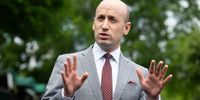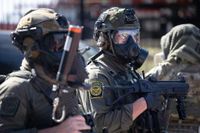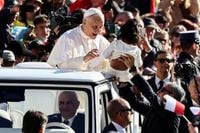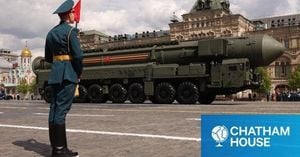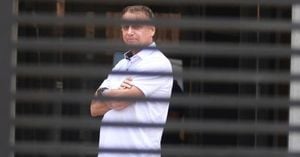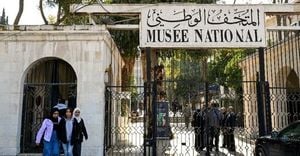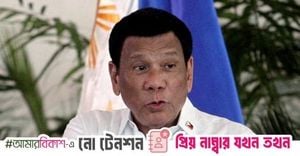Federal immigration enforcement in Chicago has come under intense legal and public scrutiny in recent weeks, as a series of high-profile court rulings, protests, and international criticism have placed the Trump administration’s tactics in the national spotlight. The situation escalated dramatically on October 7, 2025, when Texas National Guard troops arrived in Illinois on orders from President Donald Trump, even as a federal judge prepared to consider the legality of this deployment. The troop arrival coincided with a federal judge’s determination that Immigration and Customs Enforcement (ICE) had violated a standing consent decree by conducting at least 22 warrantless arrests earlier in the year across Chicago and Missouri, as reported by Capitol News Illinois.
The consent decree in question, originally brokered under the Biden administration in 2022, was designed to limit ICE’s authority to make arrests without warrants. Judge Jeffrey Cummings, presiding over the case, extended the decree until February 2, 2026, and ordered ICE to re-issue clear rules regarding probable cause to agents nationwide. He also mandated that ICE provide documentation for all warrantless arrests conducted since June 11, 2025. This move was a direct response to mounting concerns from immigrant and civil rights groups, who argued that ICE’s practice of carrying blank warrant forms and filling them out at the scene was a deliberate attempt to circumvent constitutional protections.
Judge Cummings pointed specifically to a chaotic September 30 raid in Chicago’s South Shore neighborhood, where approximately 300 federal agents—some arriving via Black Hawk helicopter—stormed an apartment building. According to The Chicago Sun-Times, more than three dozen people were arrested, and the operation extended to detaining American citizens, many of whom were Black, in zip ties for hours. The Department of Homeland Security (DHS) claimed the raid targeted alleged members of a Venezuelan gang, but the indiscriminate detentions of residents and the militarized show of force have drawn sharp criticism from both local officials and national observers.
As legal battles over the federal government’s actions intensified, another federal judge ordered the pretrial release of Marimar Martinez, a woman shot by ICE agents during an altercation in Chicago on October 4, and Anthony Ian Santos Ruiz, who was also facing charges related to alleged assaults on officers. The judge cited both individuals’ lack of criminal history and strong community ties as factors in their release. Notably, body-camera footage reportedly contradicted the government’s account of these incidents, raising further questions about the accuracy of official narratives.
The scrutiny of ICE’s conduct was not limited to the courtroom. On October 8, a federal grand jury issued a rare ‘no bill’ decision, declining to indict two protestors accused of resisting and assaulting federal officers during demonstrations outside an ICE facility in Broadview, Illinois. The protestors, Ray Collins and Jocelyne Robledo, were legally armed but did not brandish their weapons at authorities. The grand jury’s decision, reported by Bloomberg Law, is unusual given that such panels typically only hear the prosecution’s case, reflecting growing unease with the government’s aggressive enforcement posture.
Legal challenges to the Trump administration’s approach have extended beyond individual cases. On October 6, a coalition of journalists, news organizations, unions, and protestors filed a sweeping lawsuit accusing the federal government of excessive force and systematic violations of First Amendment rights during protests. The lawsuit, as described by Capitol News Illinois, alleges a “pattern of extreme brutality in a concerted and ongoing effort to silence the press and civilians.” Among the plaintiffs were journalists who claimed to have been detained for hours and faith leaders, such as the Rev. David Black, who was reportedly shot in the head with pepper balls and sprayed with tear gas while praying at a demonstration.
In response to these allegations, District Judge Sara Ellis issued a restraining order on October 8, temporarily barring federal agents in Chicago from using rubber bullets, tear gas, and other chemical munitions against journalists, protesters, and faith leaders who are not posing an immediate threat. The order specifically forbids targeting sensitive body areas and prohibits the use of vehicles or excessive physical force against nonviolent demonstrators. Judge Ellis also mandated that federal officers must provide visible identification and issue at least two warnings before deploying riot control weapons, as reported by The Independent.
Homeland Security officials, for their part, have defended their actions as necessary to uphold the rule of law and protect officers. Assistant Secretary Tricia McLaughlin stated, “We remind members of the media to exercise caution as they cover these violent riots and remind journalists that covering unlawful activities in the field does come with risks — though our officers take every reasonable precaution to mitigate those dangers to those exercising protected First Amendment rights.” She added that anyone obstructing law enforcement “will face consequences, which could include arrest.”
The legal wrangling over the deployment of federal troops to Illinois continues, with Judge April Perry currently considering a lawsuit from state and city officials who argue that the administration’s justification for sending the National Guard is “flimsy pretext” designed to provoke unrest. Similar lawsuits have been filed in Oregon and other states, and a potential Supreme Court showdown looms as appellate courts weigh the president’s authority to federalize troops in response to domestic protests.
The controversy has also drawn international attention. On October 8, Pope Leo met with U.S. bishops and social workers from the U.S.-Mexico border at the Vatican. During the meeting, the pope urged U.S. bishops to speak out firmly against the treatment of immigrants under President Trump’s hardline policies. According to Reuters, Pope Leo was presented with dozens of letters from immigrants describing their fears of deportation. The pontiff, who has become increasingly vocal on the issue, questioned on September 30 whether the administration’s anti-immigration stance aligns with the Catholic Church’s pro-life teachings. El Paso Bishop Mark Seitz, who attended the meeting, said, “Our Holy Father … is very personally concerned about these matters. He expressed his desire that the U.S. Bishops’ Conference would speak strongly on this issue.”
One letter shared with the pope described a family so fearful of deportation that they were afraid to leave their home, a sentiment echoed by many immigrant families in Chicago and across the country as enforcement actions have intensified.
As the legal, political, and moral debates over immigration enforcement and civil liberties rage on, Chicago has emerged as a microcosm of the broader national struggle. From the streets to the courts and even the Vatican, the clash over the limits of federal power, the rights of immigrants, and the protection of free speech and assembly continues to define the American landscape in 2025.
